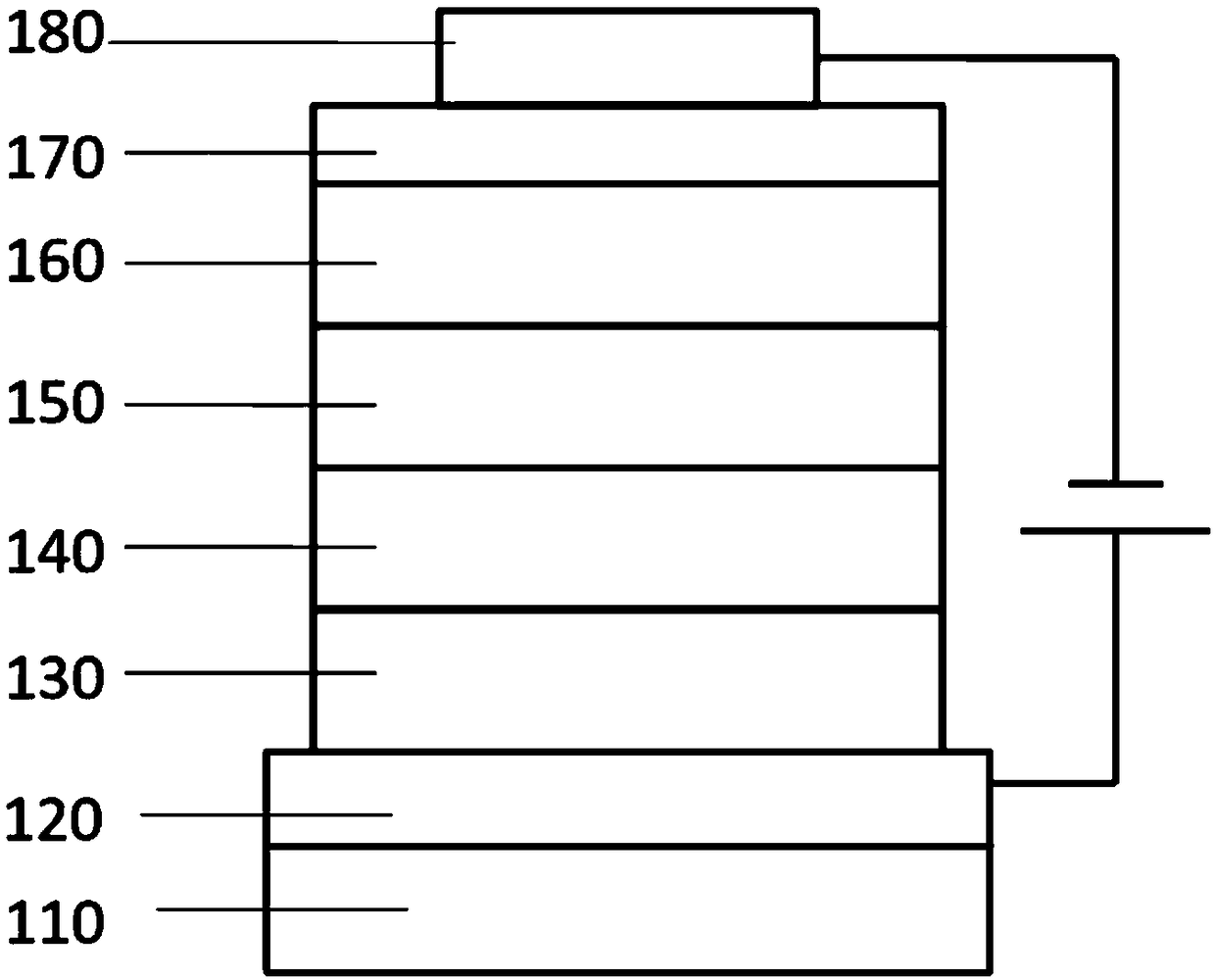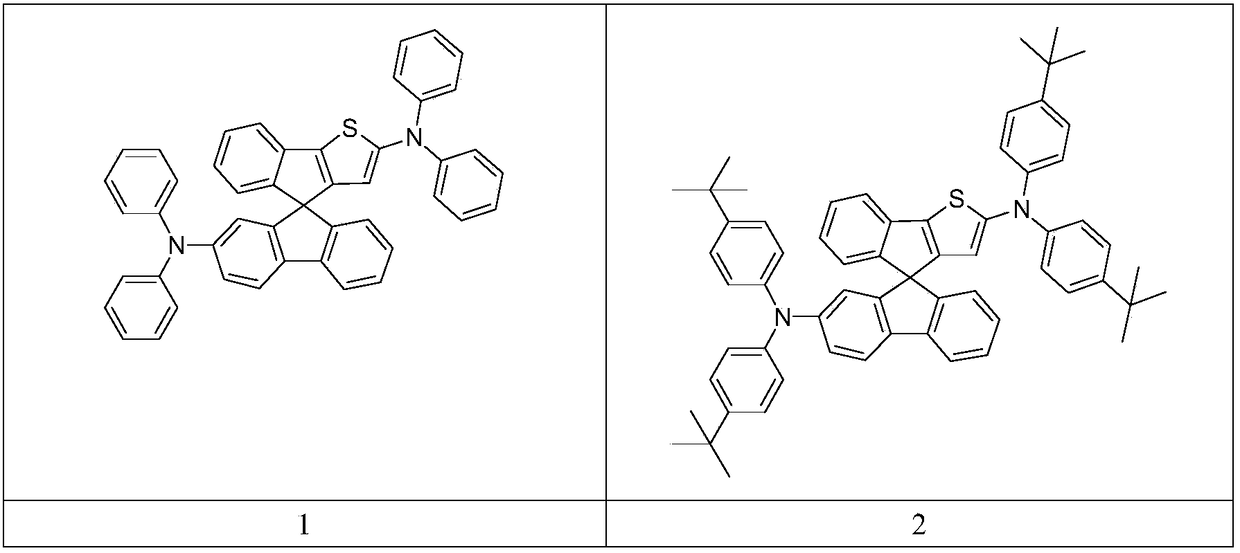Bis-tri-aromatic amine compound containing spiral structure, application and light emitting diode
A technology of triaryl amines and compounds, applied in the field of organic electroluminescent devices, can solve the problems of high energy consumption in preparation, affect device efficiency, poor thermal stability, etc., and achieve high luminous purity, high luminous efficiency, and good thermal stability. Effect
- Summary
- Abstract
- Description
- Claims
- Application Information
AI Technical Summary
Problems solved by technology
Method used
Image
Examples
Embodiment 1
[0050] Synthetic route of intermediates A, B, C
[0051]
[0052] Synthesis of Intermediate A
[0053] In a three-necked flask, add thiopheneboronic acid (10g, 78mmol), o-bromoiodobenzene (24g, 86mmol), potassium carbonate (27g, 0.2mol), tetrahydrofuran (200mL), water (100mL), tetrakistriphenylphosphine palladium (0.5g), under the protection of nitrogen, heated to reflux for 10 hours, cooled, extracted with dichloromethane, concentrated, the crude product was purified by column chromatography to obtain 14g, yield 75%.
[0054] Synthesis of Intermediate B
[0055] In the three-necked flask, add intermediate A (10g, 42mmol) and dry tetrahydrofuran (100mL) successively, cool to minus 70°C under nitrogen protection, slowly add 2.5M n-butyllithium (16.8mL), and dropwise add the reaction After 1 hour, 60 mL of a solution of 2-bromofluorenone (10.8 g, 42 mmol) in THF was added. After the addition, slowly rise to room temperature, react for 2 hours, add dichloromethane to extrac...
Embodiment 2
[0067] Synthetic route of compound 2
[0068]
[0069] The synthetic method of compound 2
[0070] In a flask, add Intermediate C (2g, 4.1mmol), bis(4-tert-butyl-phenyl)amine (2.9g, 9.2mmol), sodium tert-butoxide (2g, 20mmol), palladium acetate (50mg), X-phos (100 mg) and o-xylene (30 mL) were heated to reflux for 24 hours under the protection of nitrogen, cooled, and the solvent was removed. The crude product was purified by column chromatography to obtain 2.5 g with a yield of 68%.
[0071] The synthesis method of other examples is the same as that of compound 2, all of which are intermediate C and intermediate F as raw materials, and then reacted with other amines, as shown in Table 1 below:
[0072] Table 1
[0073]
[0074]
Embodiment 11-19
[0076] Fabrication of Organic Electroluminescent Devices
[0077] Preparation of OLEDs using the compounds of the Examples
[0078] First, the transparent conductive ITO glass substrate 110 (with the anode 120 on it) (China CSG Group Co., Ltd.) is washed with deionized water, ethanol, acetone and deionized water in sequence, and then treated with oxygen plasma for 30 seconds.
[0079] Then, PEDOT:PSS (polyethylenedioxythiophene-poly(styrene sulfonate)) with a thickness of 45 nm was spin-coated on the ITO as the hole injection layer 130, and dried at 150° C. for 30 minutes.
[0080] Then, the compound of the present invention was vapor-deposited as the hole transport material 140 on the hole injection layer to a thickness of 40 nm.
[0081] Then, a luminescent layer 146 with a thickness of 30nm is vapor-deposited on the electron blocking layer, wherein CBP is the main luminescent material, and the weight ratio is 8% of Ir(ppy) 3 As a phosphorescent doping guest material.
[...
PUM
| Property | Measurement | Unit |
|---|---|---|
| thickness | aaaaa | aaaaa |
Abstract
Description
Claims
Application Information
 Login to View More
Login to View More - R&D
- Intellectual Property
- Life Sciences
- Materials
- Tech Scout
- Unparalleled Data Quality
- Higher Quality Content
- 60% Fewer Hallucinations
Browse by: Latest US Patents, China's latest patents, Technical Efficacy Thesaurus, Application Domain, Technology Topic, Popular Technical Reports.
© 2025 PatSnap. All rights reserved.Legal|Privacy policy|Modern Slavery Act Transparency Statement|Sitemap|About US| Contact US: help@patsnap.com



